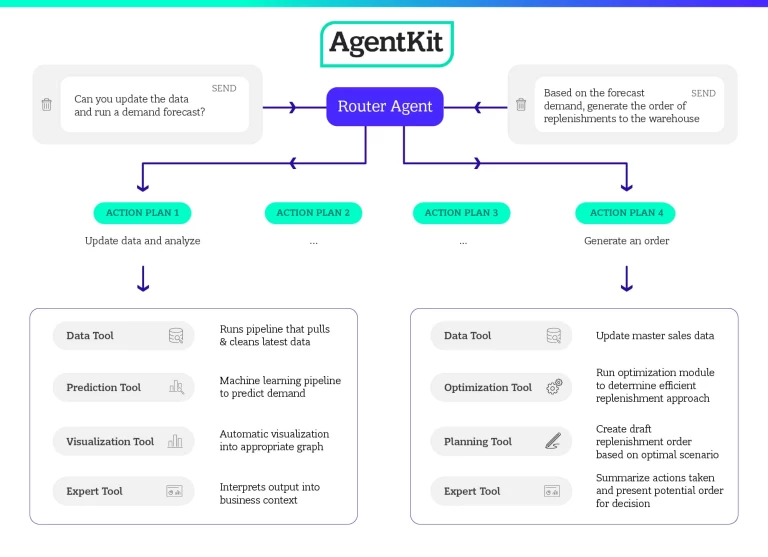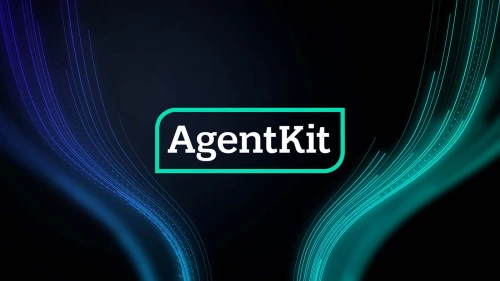The rapid adoption of AI has transformed not just the way companies do business, but the process of innovation itself. With large language models (LLMs) increasingly demonstrating reasoning, independent planning, and tool usage capabilities (e.g., OpenAI GPT-4, Gemini Ultra), they've accelerated the evolution of AI—and led inexorably to the rise of autonomous agents. These dynamic systems will redefine the way companies operate and, we think, do it very quickly.
Most of the current large language model-based applications, as noted in an earlier publication , require significant human input and do not operate independently. Traditional robotic process automation, for example, requires such input in the form of hard-coded scenarios or explicit rules. Autonomous agents represent the next step in the evolution of these applications, by being adaptable and using reasoning, rather than relying on hard-coded rules. We believe that agents will significantly impact both individual companies and the entire digital domain. And to support this latest AI revolution and contribute to its rapid advancement, BCG X has released AgentKit , a full-stack, open-source code framework designed to enable developers to rapidly build reliable and useful agent applications.
Humans play a pivotal role
While agents have significant potential, the journey towards fully autonomous agents is not without its challenges. Many companies have built interesting demos and proof of concepts but have struggled to build reliable agent applications that can be deployed into production. While being adaptable and flexible, autonomous agents can sometimes reach unexpected, undesired, or unsafe conclusions, or pursue costly paths with little potential business value. Without proper guidance, an agent tasked with market research might, for instance, fixate on an obscure data point, investing significant computational resources to explore a trend that lacks relevance to strategic business goals.
A key insight we gained while designing the AgentKit framework was that by tapping into the knowledge of human experts, we can define the most relevant and productive routes for the agent to follow. With their course set, the agents are then given a great deal of freedom and latitude to make decisions along the way to achieving their stated business goal.
By creating a role for humans at the beginning of the process, the constrained agent framework design enables the application to operate within the scope of its intended purpose. This approach significantly enhances the agent’s reliability and predictability and ensures that the agent’s actions are closely aligned to the business scenario to efficiently deliver maximum value. Humans provide potential courses: The agent continually adapts to find the optimal path.
How it works
The AgentKit framework delivers the necessary guidance in the form of “Action Plans,” predefined sets of routes agents can follow to answer the initial business query. Every Action Plan is essentially a predefined tree of tasks and decisions the agents can navigate to get to the desired output. The framework also includes a “Router Agent,” which analyzes the user’s prompt and chat history to determine the most suitable Action Plan to execute.
Once the Router Agent selects an Action Plan, the agent executes a predefined tree of digital tools and executes them in sequence or in parallel. The agent typically accesses these digital tools through an application programming interface (API) that allows the agent to connect to an ecosystem of applications and databases for information it may need to complete the task at hand.
Imagine that an autonomous agent is asked to "please forecast demand for next year given a 10% price increase." The AgentKit Router Agent identifies that the “forecasting scenario” Action Plan is most suitable and executes it. Next, it defines the scenario from the prompt into a configuration for the demand forecast pipeline, which is done using a tool with access to the pipeline’s manual and required input formats. The agent executes the pipeline with this configuration using another tool that calls an API to the demand-forecasting system. Finally, the forecasting system returns the demand data for "next year." The agent interprets the data, in this case by executing three tools in parallel to generate a short text summary, a graph, and a table with raw data the agent can refer to as it iteratively refines its work product.
Action Plans, visualized

This is just the beginning
The transition to autonomous agents is moving quickly as companies begin to understand just how powerful—and how transformative this technology is becoming. Prior to the introduction of autonomous agents, and despite the significant power of current LLMs, the creation of a demand forecast similar to the one we outline above would have typically required participation by numerous human experts and significant time to execute. Frameworks such as AgentKit that are designed to reliably implement autonomous agents enable such forecasts to be completed quickly and with minimal human input.
But there is a wide variety of ways in which the framework can improve business operations. For example, we have already used AgentKit to:
- Generate drafts of complex clinical documents such as clinical trial protocols for a global pharma company
- Create a chat interface for controlling and orchestrating supply chain optimization systems
- Create a customer-facing chatbot for a major automotive player and a competitor-pricing analysis for a major retailer
And this is just the beginning. We anticipate that the use cases for agent applications will expand exponentially—and in ways we have yet to imagine. AgentKit will support this growth by enabling companies to implement these applications quickly, test and track new approaches, connect the agent to internal and external tools, and seamlessly integrate the technology into a wide range of technical architectures across industries.
Businesses that want to seize this opportunity in the near term can begin by determining where in their organization autonomous agents could have a medium-term impact, and then start creating the necessary technical "muscle" by experimenting with agent applications. And to help ensure that autonomous agents will receive a positive reception from those already nervous about artificial intelligence, companies will be well-served to help define how responsible AI policies will apply to this emerging technology and what the guardrails will be needed to ensure its safe use.
Thank you to Jakob Heyder, Senior AI Engineer, and Ilyass el Mansouri, Senior Data Scientist, for their contributions to this article.
Learn More About AgentKit



